Chuncheng Zhang
Human-like object concept representations emerge naturally in multimodal large language models
Jul 01, 2024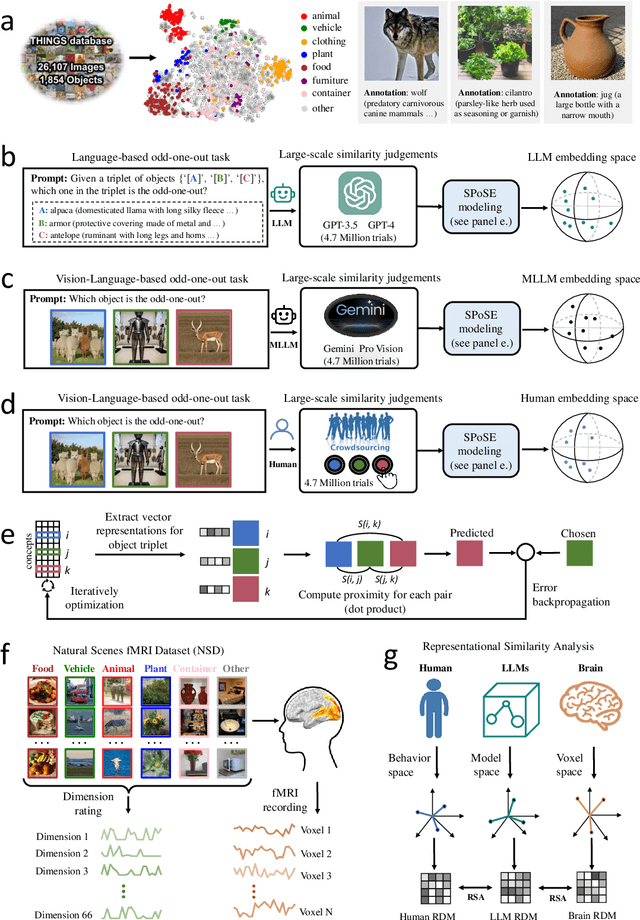
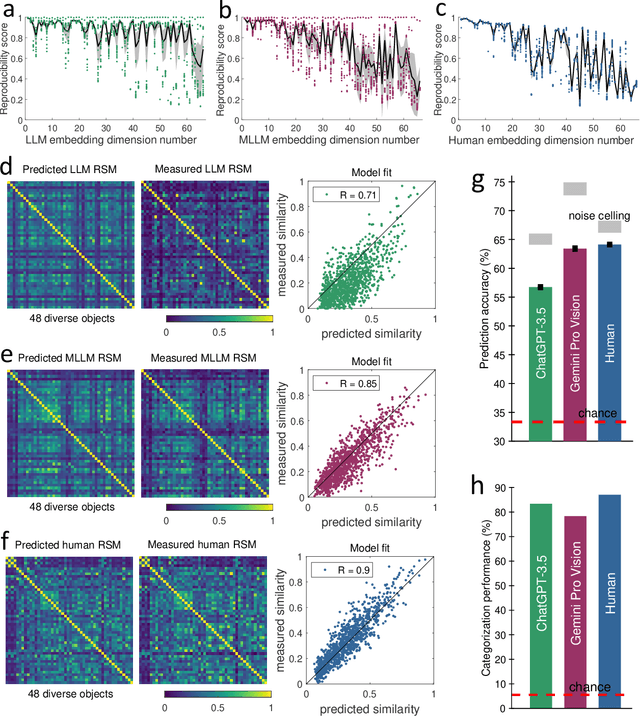
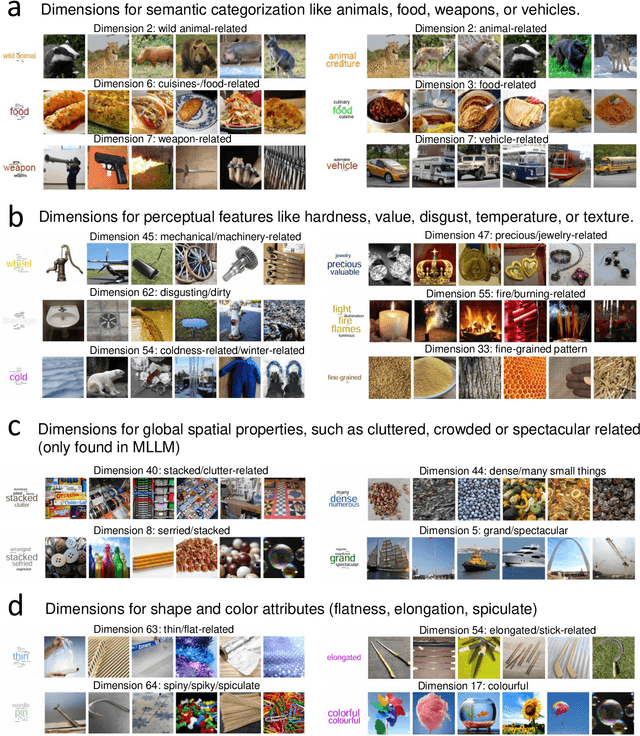
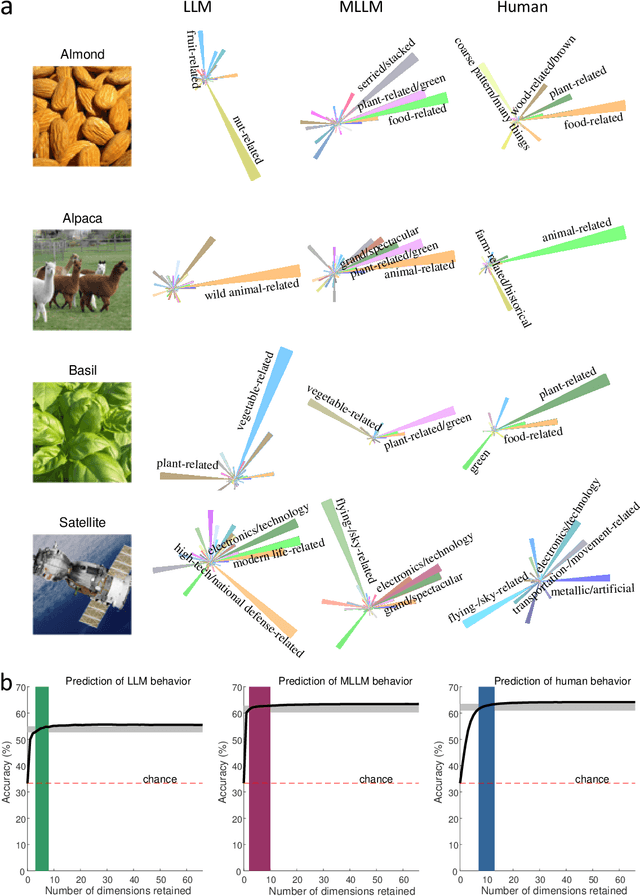
Abstract:The conceptualization and categorization of natural objects in the human mind have long intrigued cognitive scientists and neuroscientists, offering crucial insights into human perception and cognition. Recently, the rapid development of Large Language Models (LLMs) has raised the attractive question of whether these models can also develop human-like object representations through exposure to vast amounts of linguistic and multimodal data. In this study, we combined behavioral and neuroimaging analysis methods to uncover how the object concept representations in LLMs correlate with those of humans. By collecting large-scale datasets of 4.7 million triplet judgments from LLM and Multimodal LLM (MLLM), we were able to derive low-dimensional embeddings that capture the underlying similarity structure of 1,854 natural objects. The resulting 66-dimensional embeddings were found to be highly stable and predictive, and exhibited semantic clustering akin to human mental representations. Interestingly, the interpretability of the dimensions underlying these embeddings suggests that LLM and MLLM have developed human-like conceptual representations of natural objects. Further analysis demonstrated strong alignment between the identified model embeddings and neural activity patterns in many functionally defined brain ROIs (e.g., EBA, PPA, RSC and FFA). This provides compelling evidence that the object representations in LLMs, while not identical to those in the human, share fundamental commonalities that reflect key schemas of human conceptual knowledge. This study advances our understanding of machine intelligence and informs the development of more human-like artificial cognitive systems.
Imaging through multimode fibres with physical prior
Nov 14, 2023Abstract:Imaging through perturbed multimode fibres based on deep learning has been widely researched. However, existing methods mainly use target-speckle pairs in different configurations. It is challenging to reconstruct targets without trained networks. In this paper, we propose a physics-assisted, unsupervised, learning-based fibre imaging scheme. The role of the physical prior is to simplify the mapping relationship between the speckle pattern and the target image, thereby reducing the computational complexity. The unsupervised network learns target features according to the optimized direction provided by the physical prior. Therefore, the reconstruction process of the online learning only requires a few speckle patterns and unpaired targets. The proposed scheme also increases the generalization ability of the learning-based method in perturbed multimode fibres. Our scheme has the potential to extend the application of multimode fibre imaging.
Super-resolution imaging through a multimode fiber: the physical upsampling of speckle-driven
Jul 11, 2023



Abstract:Following recent advancements in multimode fiber (MMF), miniaturization of imaging endoscopes has proven crucial for minimally invasive surgery in vivo. Recent progress enabled by super-resolution imaging methods with a data-driven deep learning (DL) framework has balanced the relationship between the core size and resolution. However, most of the DL approaches lack attention to the physical properties of the speckle, which is crucial for reconciling the relationship between the magnification of super-resolution imaging and the quality of reconstruction quality. In the paper, we find that the interferometric process of speckle formation is an essential basis for creating DL models with super-resolution imaging. It physically realizes the upsampling of low-resolution (LR) images and enhances the perceptual capabilities of the models. The finding experimentally validates the role played by the physical upsampling of speckle-driven, effectively complementing the lack of information in data-driven. Experimentally, we break the restriction of the poor reconstruction quality at great magnification by inputting the same size of the speckle with the size of the high-resolution (HR) image to the model. The guidance of our research for endoscopic imaging may accelerate the further development of minimally invasive surgery.
Hyperspectral Image Super-Resolution via Dual-domain Network Based on Hybrid Convolution
Apr 20, 2023Abstract:Since the number of incident energies is limited, it is difficult to directly acquire hyperspectral images (HSI) with high spatial resolution. Considering the high dimensionality and correlation of HSI, super-resolution (SR) of HSI remains a challenge in the absence of auxiliary high-resolution images. Furthermore, it is very important to extract the spatial features effectively and make full use of the spectral information. This paper proposes a novel HSI super-resolution algorithm, termed dual-domain network based on hybrid convolution (SRDNet). Specifically, a dual-domain network is designed to fully exploit the spatial-spectral and frequency information among the hyper-spectral data. To capture inter-spectral self-similarity, a self-attention learning mechanism (HSL) is devised in the spatial domain. Meanwhile the pyramid structure is applied to increase the acceptance field of attention, which further reinforces the feature representation ability of the network. Moreover, to further improve the perceptual quality of HSI, a frequency loss(HFL) is introduced to optimize the model in the frequency domain. The dynamic weighting mechanism drives the network to gradually refine the generated frequency and excessive smoothing caused by spatial loss. Finally, In order to better fully obtain the mapping relationship between high-resolution space and low-resolution space, a hybrid module of 2D and 3D units with progressive upsampling strategy is utilized in our method. Experiments on a widely used benchmark dataset illustrate that the proposed SRDNet method enhances the texture information of HSI and is superior to state-of-the-art methods.
Fast optical refocusing through multimode fiber bend using Cake-Cutting Hadamard encoding algorithm to improve robustness
Jul 27, 2022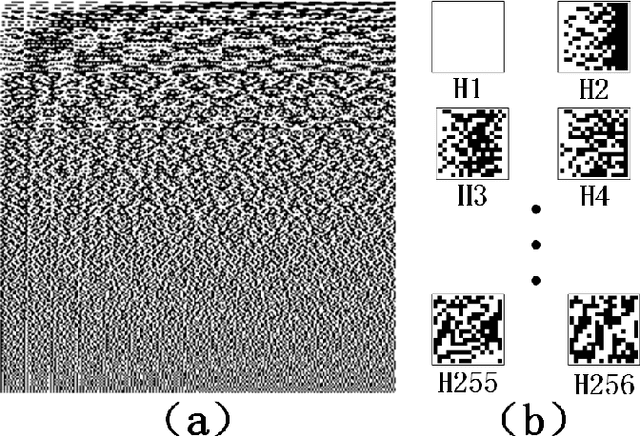

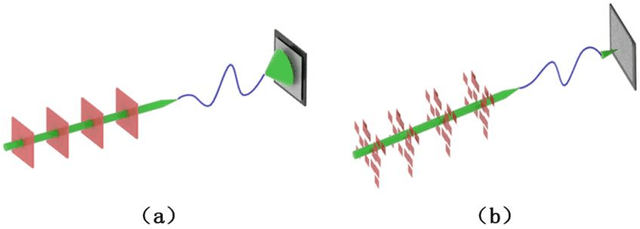
Abstract:Multimode fibres offer the advantages of high resolution and miniaturization over single mode fibers in the field of optical imaging. However, multimode fibre's imaging is susceptible to perturbations of MMF that can lead to secondary spatial distortions in the transmitted image. Perturbations include random disturbances in the fiber as well as environmental noise. Here, we exploit the fast focusing capability of the Cake-Cutting Hadamard coding algorithm to counteract the effects of perturbations and improve the system's robustness. Simulation shows that it can approach the theoretical enhancement at 2000 measurements. Experimental results show that the algorithm can help the system to refocus in a short time when MMFs are perturbed. This research will further contribute to using multimode fibres in medicine, communication, and detection.
 Add to Chrome
Add to Chrome Add to Firefox
Add to Firefox Add to Edge
Add to Edge